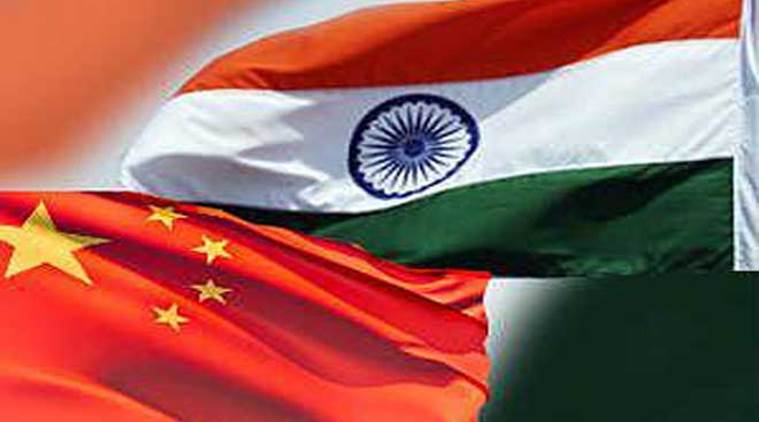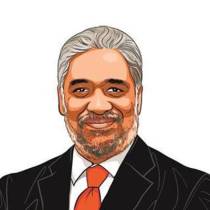Raja Mandala: India, China and the INF Treaty
Proposed US withdrawal from the three-decade-old disarmament pact with Russia presents both a challenge and opportunity for India.

As one of the nine known nuclear-weapon powers, India has to adapt to the erosion of traditional methods of managing arms races.
US President Donald Trump’s announcement 10 days ago about American plans to withdraw from the three-decade-old missile treaty with Russia has not got the attention it deserves in Delhi. The decision marks the end of an era of disarmament that India was so engaged with since its Independence.
As one of the nine known nuclear-weapon powers, India has to adapt to the erosion of traditional methods of managing arms races. Geopolitical developments, emergence of new technologies and the declining domestic political support among the great powers are contributing to the demise of arms control as we have known it.
Even more important are the likely implications of Trump’s move for Indian security — especially on the military balance with China, its traditional defence cooperation with Russia and the new possibilities for high-technology cooperation with the US, Europe and Japan.
The treaty that Trump wants to discard is the Intermediate Range Nuclear Forces (INF) Treaty that was concluded in 1987 by Presidents Ronald Reagan and Mikhail Gorbachev. It has been hailed as one of the most important arms control agreements between Washington and Moscow. Under the INF treaty, the US and Soviet Union agreed not to develop, produce, possess or deploy any ground-based ballistic and cruise missiles that have a range between 500 and 5,500 km. It exempted the air-launched and sea-based missile systems in the same range. The agreement came in the wake of huge public outcry in Europe in the 1980s at the Russian deployment of the SS-20 ballistic missiles and the US response with Pershing-2 rockets. The INF treaty helped address the fears of an imminent nuclear war in Europe. It also built some trust between Washington and Moscow and contributed to the end of the Cold War.
But the treaty had loopholes that have now come to haunt America and Russia. The INF treaty was a bilateral agreement between Washington and Moscow. It left the other nuclear weapon powers free to develop ground-based intermediate range forces. In the age of nuclear superpowers, it did not seem to matter. Since then, many countries have developed missiles in the range of 500 to 5,500 km, including India, Pakistan and North Korea.
But it is China that has dramatically expanded its missile arsenal in the last three decades. According to American officials, nearly 90 per cent of China’s vast missile armoury — estimated at around 2,000 rockets — is in the intermediate range and would be illegal if Beijing were to be a part of the INF treaty.
Although the US cites Russian violations of the INF treaty as the immediate cause for the withdrawal, coping with China’s massive rocket force appears to be the more important reason for the decision. Trump’s national security adviser, John Bolton, has long argued that even without the alleged Russian violations, the INF treaty was a bad idea since it left China and North Korea free to undermine the security of the US and its allies in Asia.
Here is the problem: The expansive Chinese land-based intermediate range missile forces threaten the American naval ships deployed in the Western Pacific and target US military bases in Japan. The vulnerability of American military presence in the Pacific to Chinese missiles, in turn, undermines the credibility of American security commitment to its Asian allies.
The US military leadership has long sought to lift the limitations imposed by the INF treaty on US missile forces in Asia. In announcing the intent to withdraw, Trump said the only way to sustain the treaty is for Russia to stop the violations and China to join the INF treaty. Many arms control activists have long called for a genuinely universal INF treaty — that is all countries will give up intermediate range missiles.
China has already rejected the proposition. It has always refused to join the US-Russian arms control agreements. India too will have little interest in joining a treaty that would take away its current nuclear deterrent in the form of medium-range Agni missiles.
India’s problem is less with the arms control diplomacy than the nature of its missile programme. While it has no reason to shed tears for the INF treaty, it will have to seriously examine the implications of the next steps by the major powers. If the US deploys a new INF in Asia, to enhance its capacity to deter China, Beijing is bound to react. The focus of a potential new arms race appears to be less on traditional nuclear armed missiles, but precise hypersonic missiles (which travel at least five times the speed of sound) equipped with conventional warheads. Moscow and Beijing have already invested in the development of hypersonic systems.
India too has an effort underway on hypersonic missiles — part indigenous and part in collaboration with Russia to build on the supersonic Brahmos missiles that travel more than twice as fast as sound. But as the US conflict with Russia deepens, Delhi’s partnership with Moscow on advanced military systems will come under increasing scrutiny and pressure. It would be right to assume that the recent controversy over the acquisition of S-400 from Russia is just the beginning of a trend. Meanwhile, Russia’s tightening military embrace with China also casts a shadow over defence ties between Delhi and Moscow.
Delhi, then, will have to think long and hard about its missile programme by focusing on the urgent need to ramp up the domestic effort as well as diversify its international collaboration on hypersonic weapons. India needs a significant force of hypersonic missiles to better control escalation to the nuclear level if there is another Doklam-like military confrontation with China. Delhi will also have to cope with the inevitable proliferation of hypersonic systems in its neighbourhood.
The writer is director, Institute of South Asian Studies, National University of Singapore and contributing editor on international affairs for The Indian Express
For all the latest Opinion News, download Indian Express App
More From C. Raja Mohan
- Raja Mandala: The great Sunni divideJamal Khashoggi’s murder bares the sharp differences between Saudi Arabia and Turkey. US has its work cut out in resolving the conflict...
- A diplomatic blind spotDelhi focuses narrowly on its own interests, tends to recoil from any political discussion of the existential challenges to the Arab Gulf. ..
- Farewell to South AsiaAs SAARC project loses all steam, Delhi needs to reimagine its economic and political geography..







































No hay comentarios:
Publicar un comentario